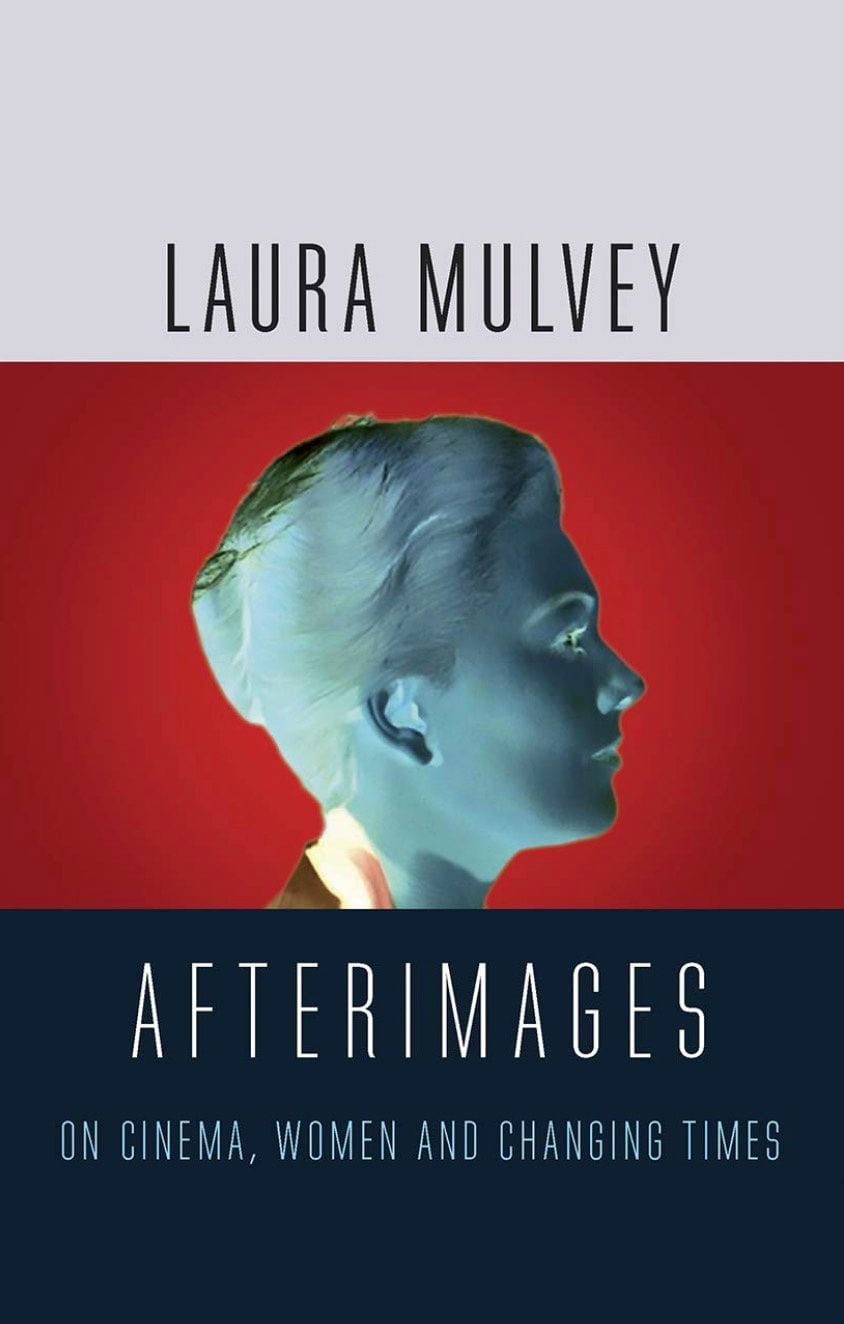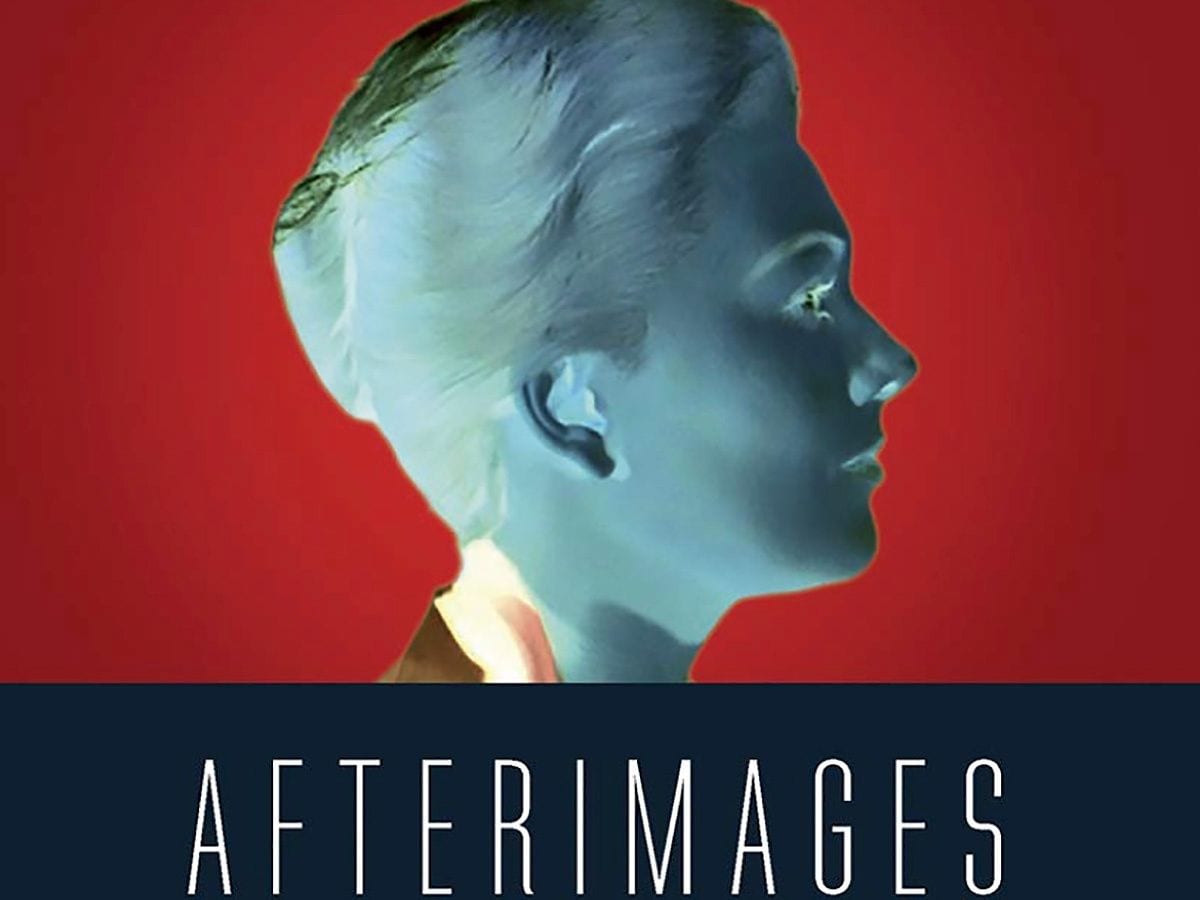
With 1975’s “Visual Pleasure and Narrative Cinema” first published in the journal Screen, Laura Mulvey produced a definitional essay that achieved the rare feat of making an impact beyond the confines of academia, its acute analysis of gendered film spectatorship bringing concepts such as “the male gaze” into common as well as critical parlance. Though perhaps inevitably defined by that game-changing, classic piece, Mulvey has, of course, continued her work and research as a professor at Birkbeck, University of London.
What’s more, she has also put her camera where her mouth is, if you will, by turning to feminist counter-cinema filmmaking herself. This makes her the rare critic/theorist with the distinction—OK, let’s go ahead and call it the advantage—of also being a practitioner, one capable of bringing a filmmaker’s sensitivity to her close readings of particular works.
The recent death of Peter Wollen, Mulvey’s collaborator on some of those film projects, including 1977’s Riddles of the Sphinx, gives greater poignancy to the appearance of her latest volume. Afterimages: On Cinema, Women and Changing Times brings together a selection of lectures and essays that Mulvey has written over the last 13 years: that is, since the publication of Death 24x a Second: Stillness and the Moving Image in 2006.
Afterimages is divided into three main parts and boasts an Appendix, “Ten Frequently Asked Questions about ‘Visual Pleasure and Narrative Cinema'”, in which Mulvey addresses some of the responses to her classic polemic, which has, of course, been rigorously critiqued by scholars since its first appearance. As Mulvey notes in the Preface, the new book “returns to my longstanding preoccupation with women in film, their histories, their stories and their images” (p.10). Issues concerning women, time, cinematic representation, and spectatorship are woven throughout the majority of the chapters, and the book’s “play” with temporality is evident not only in terms of its content but also in its structure.
Part One, significantly titled “A Last Chapter”, focuses on women in male-directed 1950s cinema, “a time of industrial decline,” Mulvey writes, “but also the decade in which some of the greatest films of the studio system were made” (p.73). Mulvey begins with a fine chapter on Lola Montès (1955) that approaches that film as Ophüls’s “most sustained reflection on the female star as spectacle and commodity and as an image for circulation and exchange” (p.25). This leads to a striking return to Hitchcock’s Vertigo (1958) in which Mulvey admits that her initial reading of the film, immersed in feminist critique, may have underestimated the self-reflexivity of Hitchcock’s approach to voyeurism, fetishism, and male constructions of femininity.
Opening with some (rather pointless) Charlie Chaplin parallels, an otherwise astute and sympathetic chapter on Marilyn Monroe’s star image shows how Monroe’s “superstar persona arises at the time of the Hollywood studio system’s decline and is thus …. emblematic of the period and its contradictions” (p.57). The final chapter in the section turns to Godard’s Le Mépris to further reflect on the studio system crisis. Here, she argues that the film is both an elegiac farewell to classical cinema and a celebration of the radical new forms Godard and others were instrumental in developing. The lack of focus on gender renders this piece tangential to the section as a whole.
Indeed, despite Mulvey’s evident efforts at shaping the volume, Afterimages sometimes feels like a grab bag of random pieces, and a certain amount of force is required to make the book truly cohere. Even so, the following individual sections offer some stimulating observations. Mulvey uses the usual theoretical suspects – Deleuze, Metz, Kristeva, Freud – in her analyses and uses them illuminatingly, albeit with less critique than one might wish for. But her style is less forbidding than the subjects’, never sacrificing accessibility.
Part Two, “The Next Chapter”, shifts the focus to female-directed global cinema from the 1970s onwards, with Akerman’s Jeanne Dielman, 23, quai du commerce, 1080 Bruxelles (1975), Dash’s Daughters of the Dust (1991) Bani-Etemad’s Under the Skin of the City (2001), Marazzi’s For One More Hour With You (2002) and Barnard’s The Arbor (2010) all receiving illuminating, chapter-length treatments. Despite the films’ differences, this section is more successful than its predecessor in interweaving thematic throughlines, with Mulvey highlighting the films’ focus on mother figures and their diverse experiments with time and space.
Part Three tackles cinema’s status concerning modern art, exploring how 1970s-rooted radical aesthetics persist and are transformed in the wide-ranging work and installations of Morgan Fisher, Mark Lewis, Isaac Julien, and Mary Kelly. Mulvey had previously reassessed the arguments in her most famous essay in 1981’s “Afterthoughts on ‘Visual Pleasure and Narrative Cinema'”. But it’s good to find her returning to that piece many years later in the Appendix. This final section makes a solid and appropriate coda to a book concerned with reviewing, revisiting, and rethinking ideas.
Addressing issues including the absence of race and notions of queer spectatorship in the piece, its contentious recourse to Freud, and, most illuminatingly, the implications of new viewing platforms on gendered spectatorship, the Appendix avoids succumbing to a defensive tone and will be much appreciated. Readers may be heartened or dispirited to find Mulvey praising Patty Jenkins’s Wonder Woman (2017). I’d prefer to hear her thoughts on recent work by Claire Denis, Joanna Hogg, Sally Potter, or Kelly Reichardt. The book lacks the breathless range and brilliant connection-making that distinguished Sophie Mayer’s great Political Animals: The New Feminist Cinema (2016).
Still, Mulvey’s ability to provoke and stimulate remains undiminished. Paying tribute to the feminist critics who wrote about Mary Kelly’s Post-Partum Document (1973-1979) she writes: “their words and ideas… their commentaries and analyses, have established a terrain and a frame of reference for today’s feminist engagement with aesthetics, theory art practice and beyond” (p.237). At her best, with Afterimages, Mulvey continues to achieve precisely that.
Afterimages is available at a 20% discount.
Go to the University of Chicago Press website.
Enter discount code: AFTER20
- Preeto & Other Stories, Rakhshanda Jalil (book review) - PopMatters
- The Magical Presence of Anna Karina: More Than Godard's Muse ...
- The 100 Essential Directors Part 1: Chantal Akerman - Bernardo ...
- A Feminist Adventure Unfolds When 'Celine and Julie Go Boating ...
- How Live-Streaming Social Media Websites Complicate the Male ...
- You Will Get Fooled Again: 'Cinema's Bodily Illusions: Flying ...
- The Power of Cute, by Simon May (review) - PopMatters
- Witnessing Sexual Trauma: The Complex Facets of the Gaze in ...
- There Are No Easy Answers for Feminism in 'Riddles of the Sphinx ...
- Afterimages by Laura Mulvey from Reaktion Books
- Afterimages: On Cinema, Women and Changing Times, Mulvey
- Afterimages: On Cinema, Women and Changing Times: Amazon.co ...
- Afterimages: On Cinema, Women and Changing Times: Laura ...
- Laura Mulvey's Top 10 | The Current | The Criterion Collection
- Professor Laura Mulvey — Department of Film, Media and Cultural ...
- Laura Mulvey - Wikipedia

